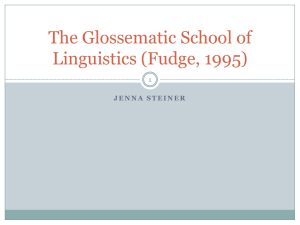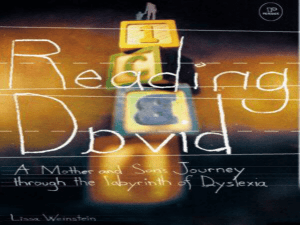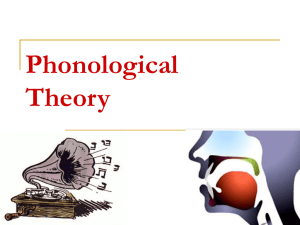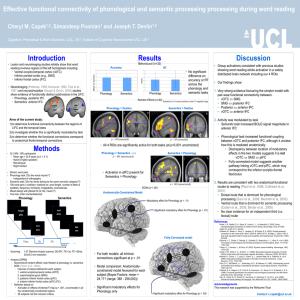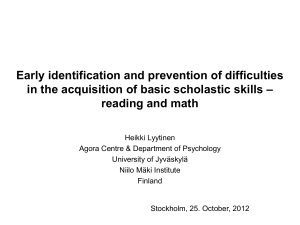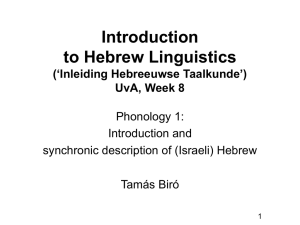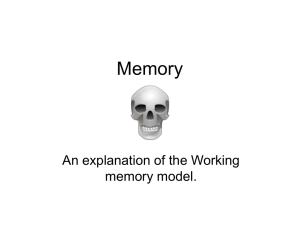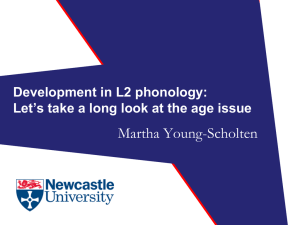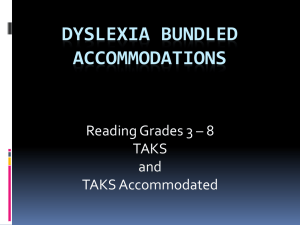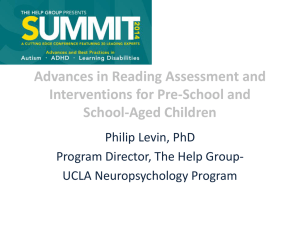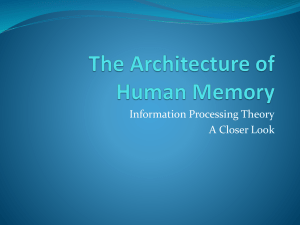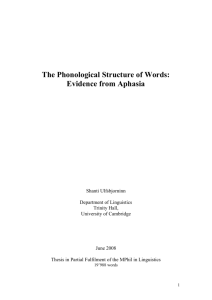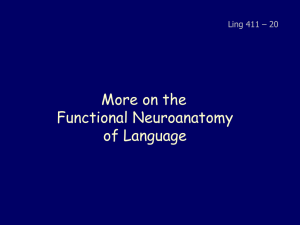Visual Word Recognition Overview
advertisement
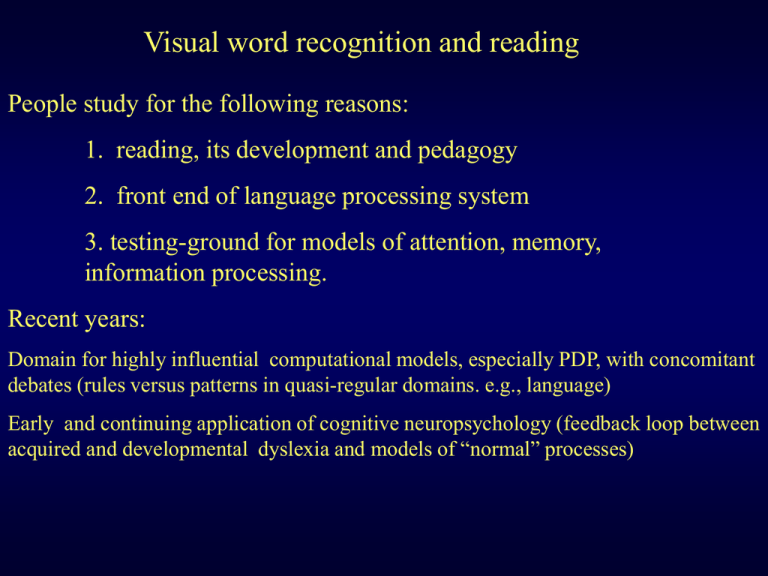
Visual word recognition and reading People study for the following reasons: 1. reading, its development and pedagogy 2. front end of language processing system 3. testing-ground for models of attention, memory, information processing. Recent years: Domain for highly influential computational models, especially PDP, with concomitant debates (rules versus patterns in quasi-regular domains. e.g., language) Early and continuing application of cognitive neuropsychology (feedback loop between acquired and developmental dyslexia and models of “normal” processes) Why the focus on words: eye movements and reading? As we read, we shift our local attention throughout the text in word size units. (video example) We make a saccadic eye movement to fixate each word, rarely skipping a word, except for short function words, and occasionally making multiple fixations within a word. “Windowing” the text so that we only see word units does not dramatically interfere with reading. With a window of 20 characters (cognitive scientists) reading is as efficient as with unrestricted text. “Preview’ effects are limited We fixate on words because they are the central processing unit, NOT because they have spaces between them. Fixation duration and patterns related to lexical variables Frequency Contextual fit Ambiguity Models of fixation patterns 1. Cognitive variables modulate fixations, affecting when we make the next saccade (Rayner and colleagues) 2. Saccade goes to next region of interest (based on low-level factors, unless there is an error signal (McConkie) Review: Reading as Reading Writing systems must make a trade-off between semantic transparency and expressiveness: They ALL choose expressiveness by using an orthographic symbol, whether it be a “logograph” a symbol for a syllable, or a symbol for a phoneme to represent a unit of sound What role does sound play in reading? Classic distinction: direct access (visual to meaning) mediated access (visual to phonological to meaning) dual process (two routes, weighting of which shifts as skill increases) What role should sound play in reading pedagogy? Phonics versus “look-say” Chall 1960s, phonics works Meta-linguistic sound tasks correlated with early reading & reading readiness (e.g., take the “k” out of monkey &what do you get?) Phoneme is inaccessible linguistic unit of sound (depends on literacy, as do many other “sound judgments” Skilled reading: Van Orden (1987), phonological effects on category decisions Category: flower rose (fast yes, few errors) rows (slow no, many errors) roze (slow no, many errors) Other Basic results: Tasks: lexical decision (word or non-word) naming (pronunciation aloud) Variables: Results (naming): frequency (piano versus viola) main effect orth regularity (aisle versus caste) main effect spelling-sound regularity: waste versus caste) interaction with freq*** lexicality (cave versus kave) main effect; nonwords pronounced consistently concreteness (truck versus truth) interaction with freq lexical neighborhoods: bone (done, one) interaction with freq, hit (???) regularity; affects nonwords*** Frequency by regularity interaction in naming irregular regular HF LF Acquired Dyslexia • Deep dyslexia (massive left hem damage): – semantic errors: • apple----> orange • yacht----> boat – visual errors: • shoe------> shop – mixed errors: • sympathy-----> orchestra • Phonological dyslexia: – Nonword naming is impaired • Surface dyslexia: – Irregular words hard to name • caste – Nonwords and regular words are easy • kave, haste Early influential models TOP Logogen (Morton): pattern detectors (precurser to localist connectionist models) Search model (Forster) Interactive activation McClelland and Rumelhart Word superiority: Letter better detected in a word than a non word house the scallop and turnip but TOP T words letters features Dual Route Model • Spelling-sound rules to assemble phonology • Direct access through orthography to retrieve "addressed phonology" – Brain damage can result in lesions to either route (surface vs phonological dyslexia – A child with phonological problems may have difficulty with the spelling-sound route. Phonological dyslexia Orthographic lexicon addressed phonology Assembled phonology Visual processing Spelling-sound rules input phonology Output Surface dyslexia Orthographic lexicon addressed phonology Assembled phonology Visual processing Spelling-sound rules input phonology Output Problems: What are the rules? “Neighborhood” effects for non words What about deep dyslexia? Why are phonological codes accessed in skilled reading? Why is there a correlation between phonological impairment and reading? Orthographic lexicon Visual processing addressed phonology Assembled phonology Spelling-sound rules input phonology Output Seidenberg & McClelland Model semantics HU orthography HU HU phonology Neural Network learns mapping from spelling to sound Simulates freq, freq by reg interaction, non-word reading with no rules (degree of learning) Too few hidden units lead to surface dyslexia. Performs badly on non words (needs better representations) Degraded phonological representations make it like a phonological dyslexic Deep Dyslexia: (Hinton, Plaut & Shallice) • semantic errors – apple read as orange • visual errors – sympathy read as symphony • mixed errors – sympathy read as orchestra • syntactic class effects – nouns<verbs<adjectives<function words • concreteness effects • nonwords badly impaired Hinton, Plaut & Shallice semantics HU orthography HU HU phonology Hinton, Plaut & Shallice semantics hard to learn HU orthography HU HU phonology easy to learn Hinton, Plaut & Shallice Clean-up semantics hard to learn HU orthography HU HU phonology easy to learn Representational space for semantic units opera orchestra symphony sympathy house Rules versus patterns Dual route: exceptions are patterns, regulars learned/processed by rule PDP approach: division of labor among multiple systems; no rule versus pattern distinction Past-tense pick/picked, lick/licked, hit/hit; goes/went Pinker & colleagues (Marcus, Ullman) two systems: rule and pattern association frequency affects exceptions not regulars Seidenberg and colleagues: same as spelling-sound regularity



